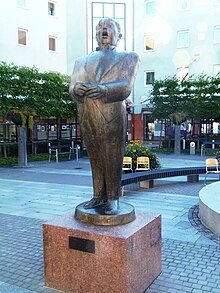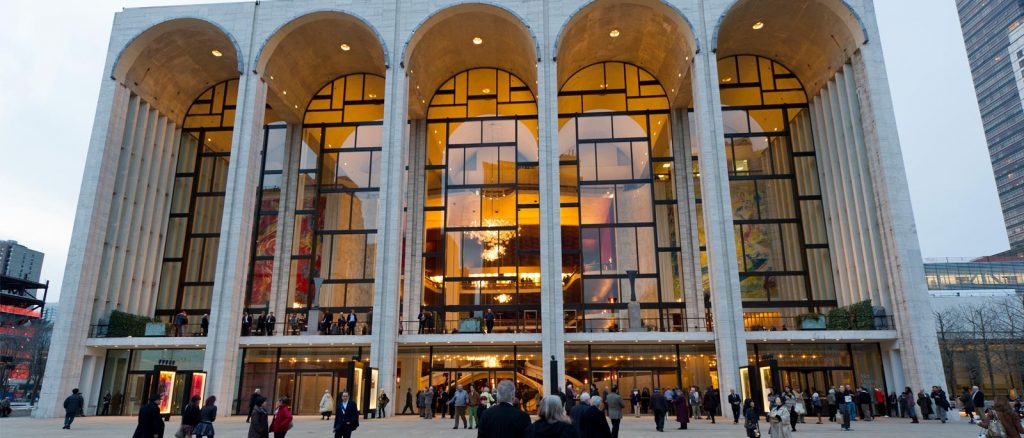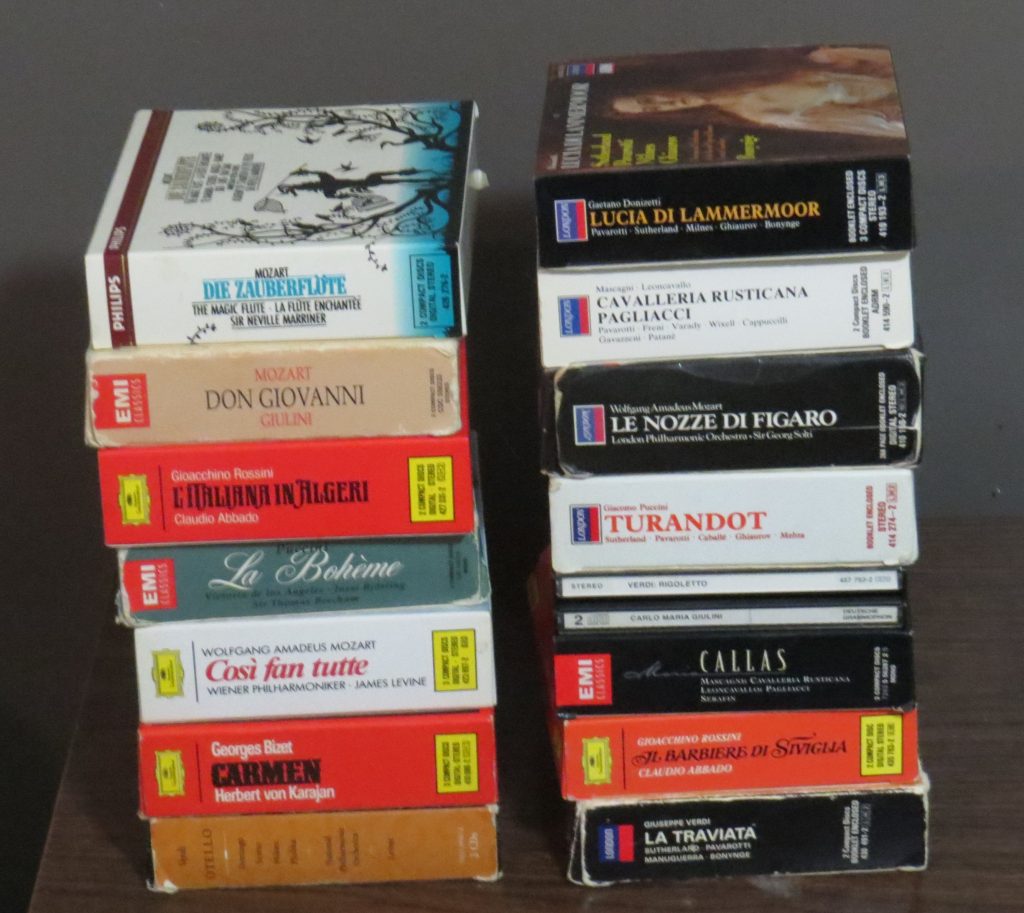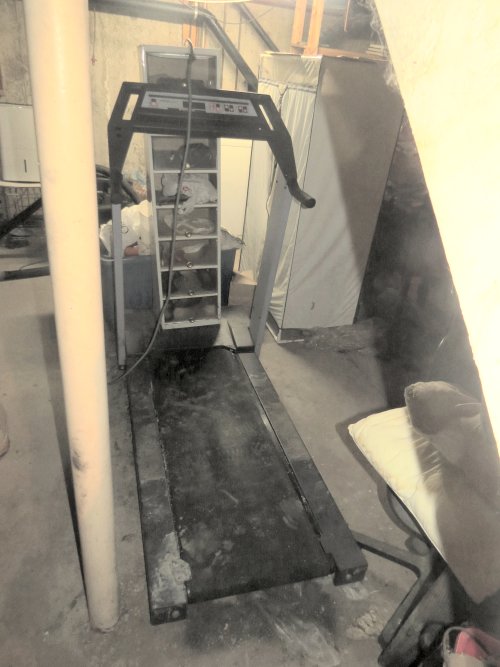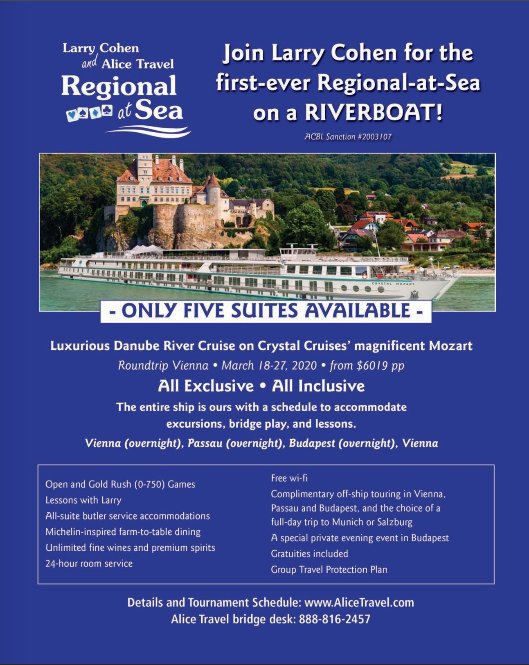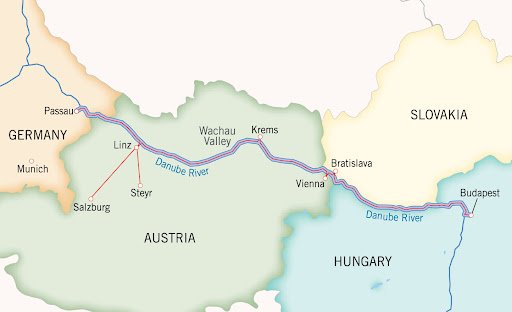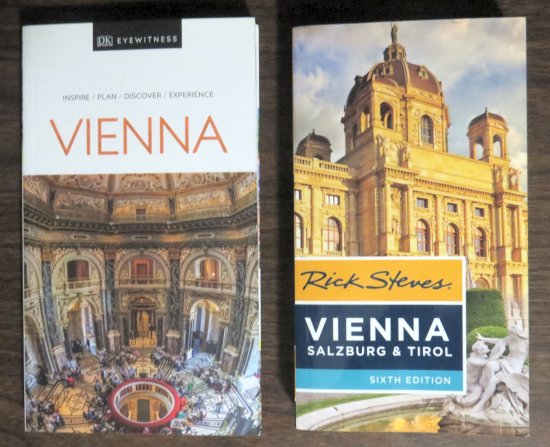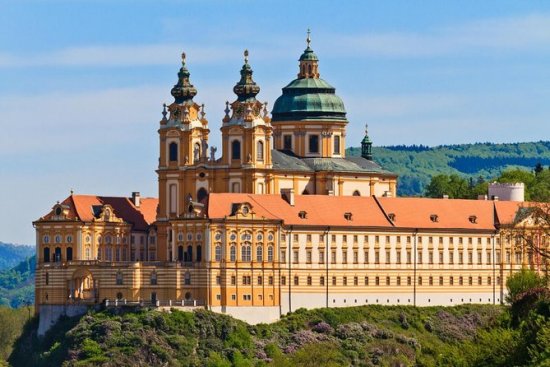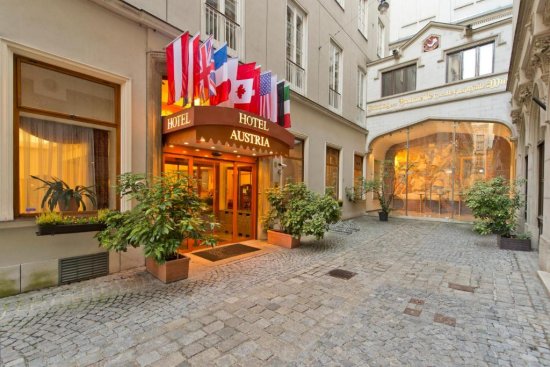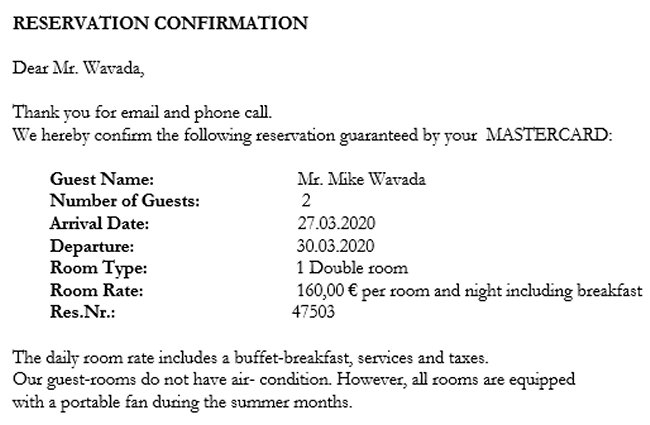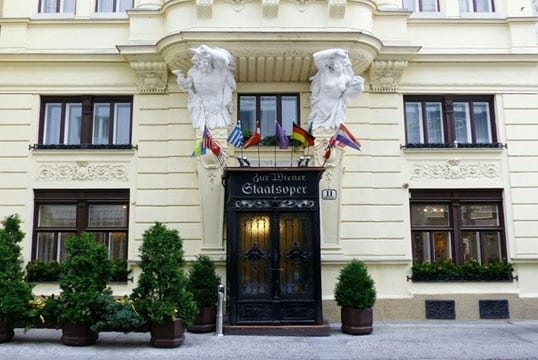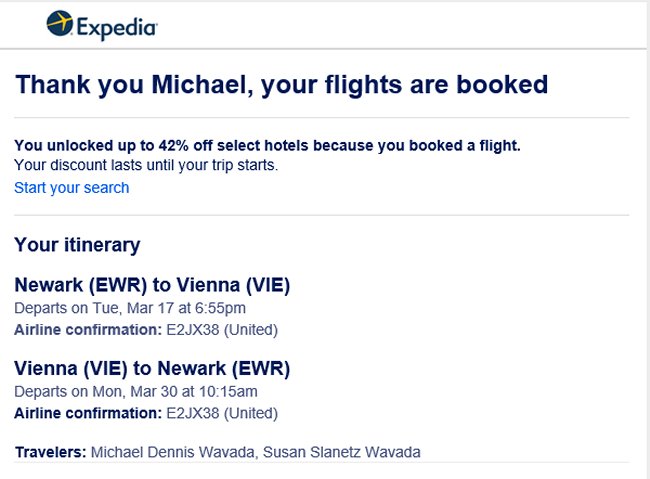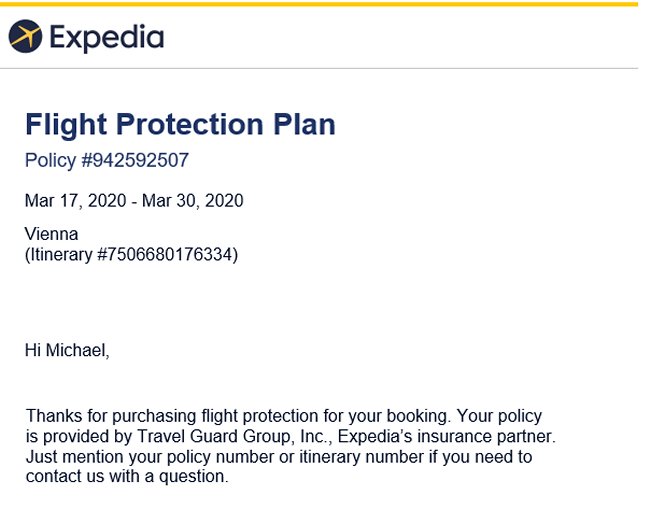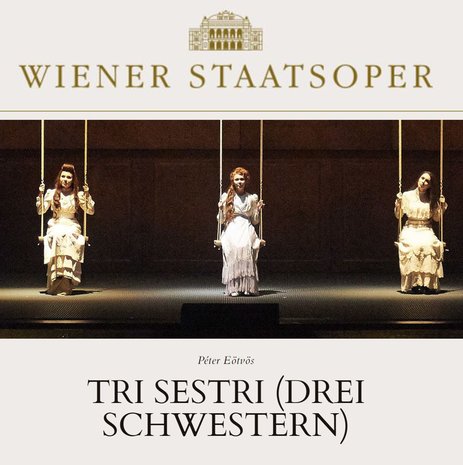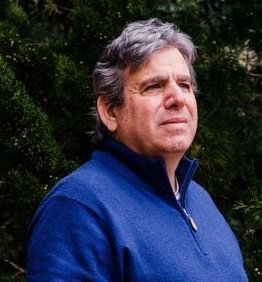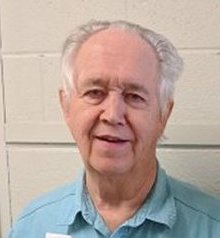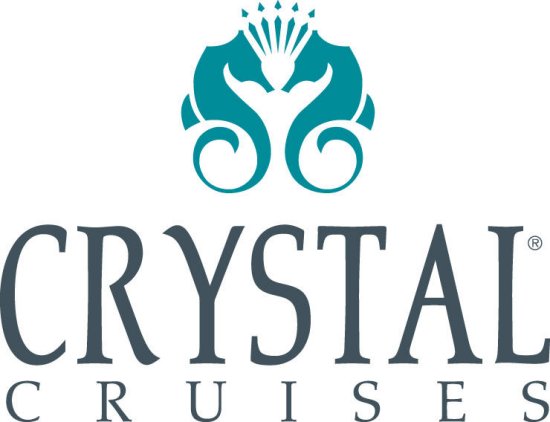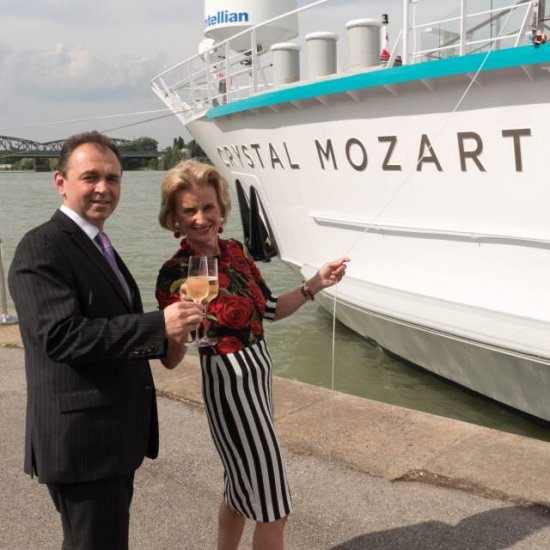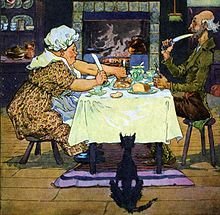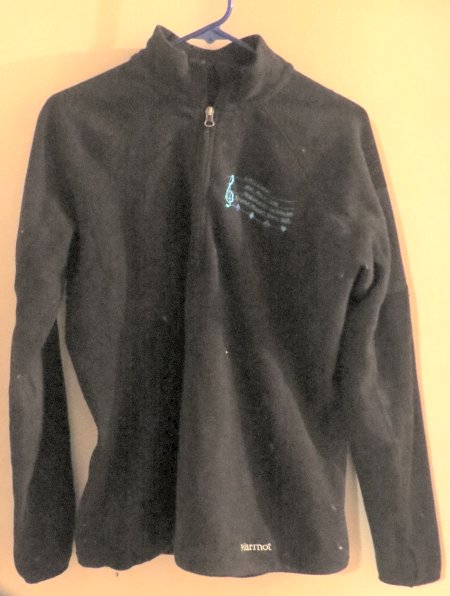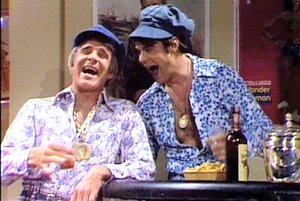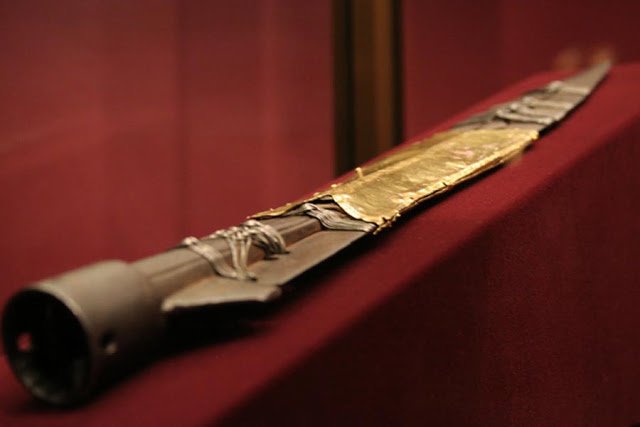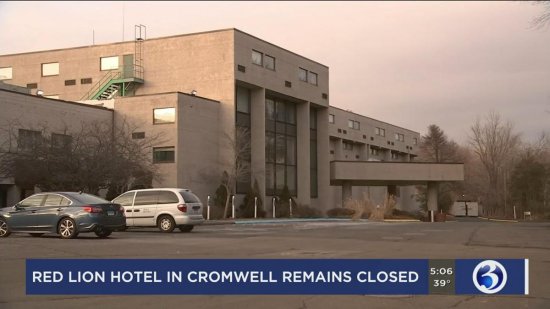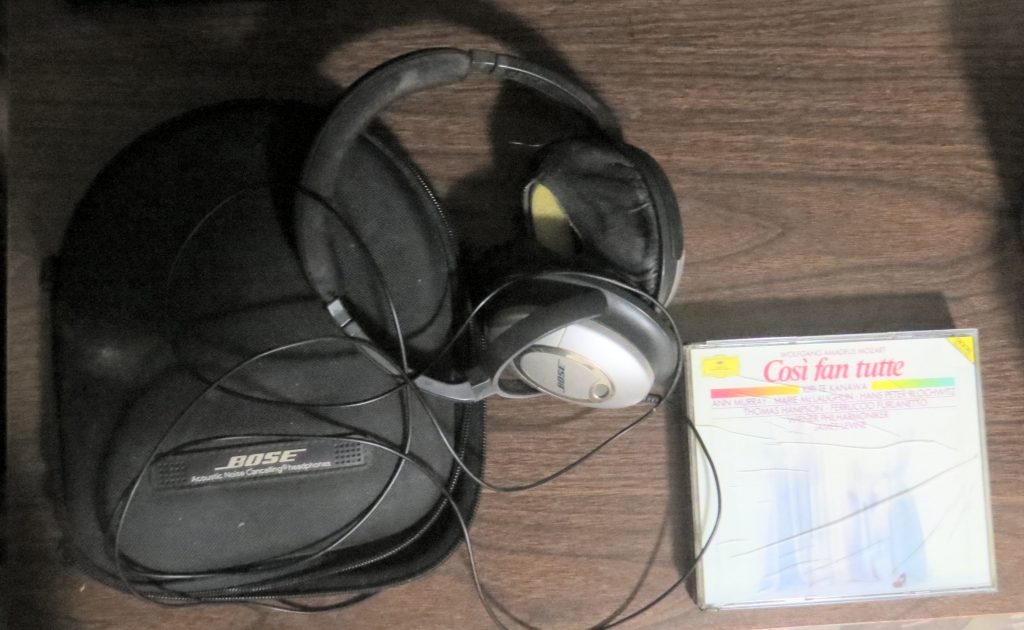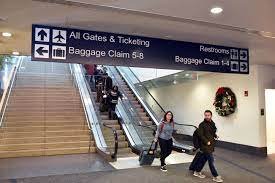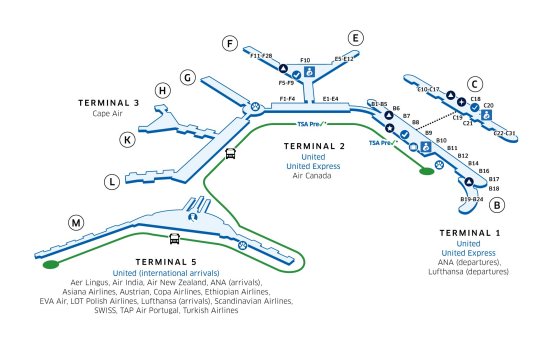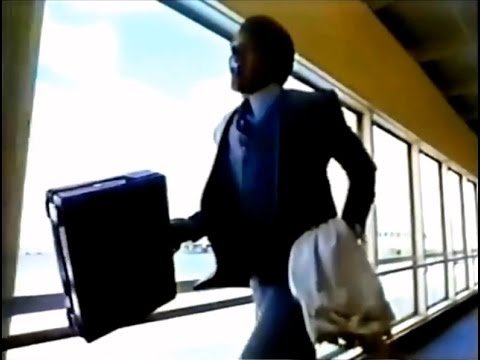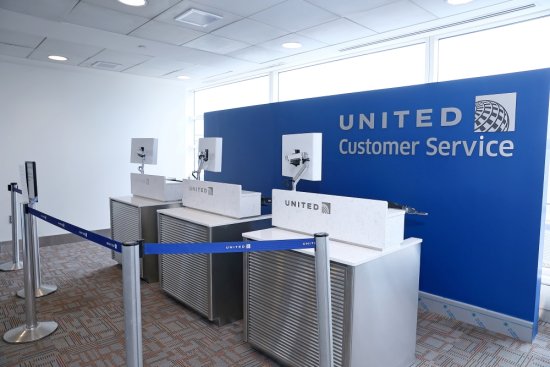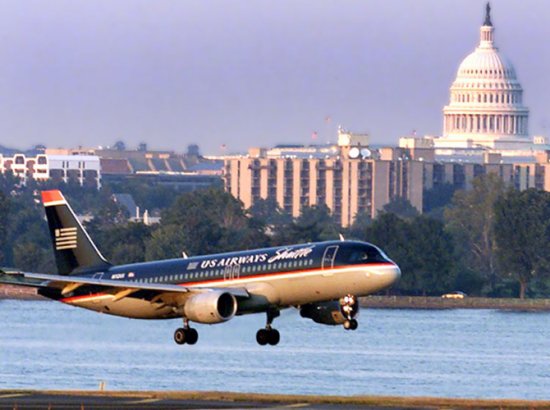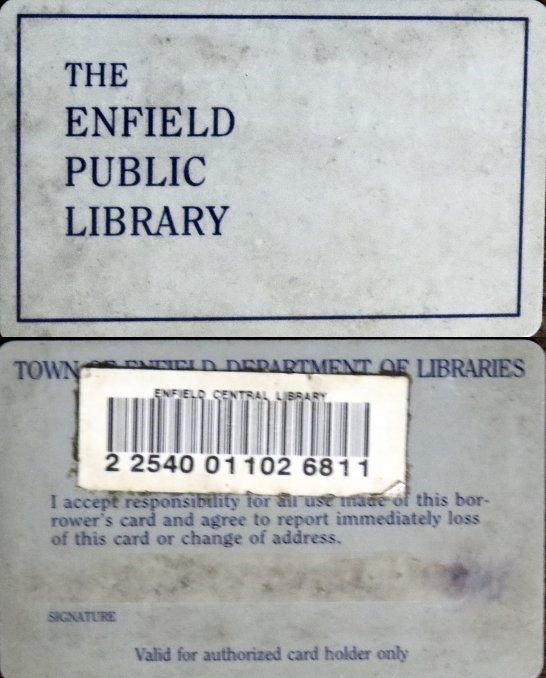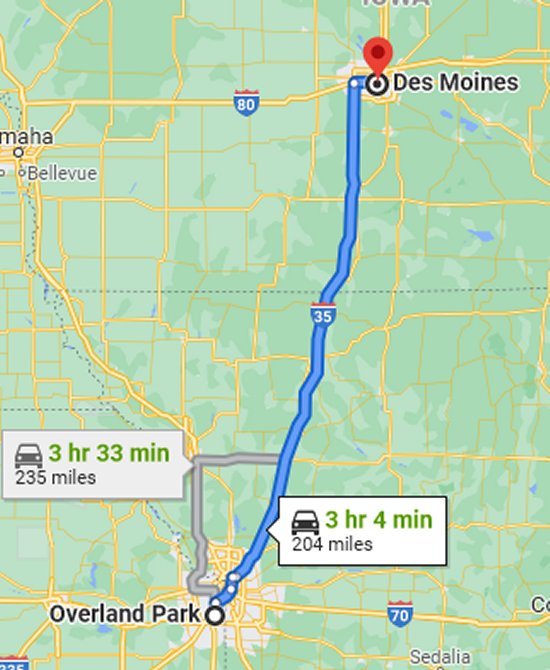An interest more than a passion. Continue reading
Introduction to opera: It was a very important incident in my life, but I have only the sketchiest memories of the occasion. I am pretty sure that my viewing of the movie The Pad (and How to Use It)1 took place in the TV room in the basement of Allen Rumsey House. The movie was released to theaters on my eighteenth birthday in August of 1966. I am pretty sure that I watched it by myself on Bill Kennedy’s afternoon show. He showed only old movies, and so I am dating this entry as 1969, the year that Kennedy moved his show to channel 50, WKBD. However, it might have been a little earlier, when he was still on CKLW, the powerful station in Windsor, ON.
The movie was based on a play by Peter Shaffer called The Public Ear. In it a guy meets a woman at a symphonic concert ( Mozart’s 40th, as I recall) and invites her to his apartment for supper. I admit that I watched this movie because of the promotions that portrayed it as a sexy comedy. In reality there is no sex at all. Parts of the movie are definitely funny, but the ending is tragic.
The guy (played by Brian Bedford), has mistakenly concluded that the woman (Julie Sommars) is an aficionado of “long hair” music. In his “pad”he shows her his sophisticated phonograph system and plays excerpts from Wagner’s Der Fliegende Holländer and the Humming Chorus from Pucini’s Madama Butterfly.
I was not familiar with either of these works. The Wagnerian selection did not do much for me (and still doesn’t), but I found the Humming Chorus really moving (and still do). The woman, on the other hand, was much more interested in the guy’s neighbor (James Farentino), who had volunteered to cook a romantic supper for them.
This viewing occasioned my purchase of a few vinyl record albums. In those days full operas came in boxed sets of three or more records, which made them pretty expensive. One-disk recordings of the highlights from operas were also available. I purchased one of those for Madama Butterfly, and I really enjoyed it. I also purchased a couple of “greatest hits” albums from famous opera singers such as Renata Tebaldi and John McCormack. I also found some collections dedicated to individual composers. The one that I liked the best contained Rossini’s overtures. I should emphasize that I bought almost all of these records after they had been heavily discounted. I seldom paid more than $2 apiece.
I also frequented the small library of recordings that was available in West Quad. I don’t remember finding anything there that I really liked, but it exposed my ears to some new composers.
I had little or no success in getting any of the other A-R residents to listen to these records. I am not sure that I even tried.
I had no phonograph when I was in training in the army. At my first permanent station, Sandia Base in Albuquerque, I was occasionally able to assemble and conduct a small group of air musicians to accompany my recording of the overture from Rossini’s Guillaume Tell. That was fun. In my final assignment at Seneca Army Depot I finally found a kindred spirit. That experience has been recorded here.
Live performances: Operas have always been expensive. For the first half of my working career my wife Sue and I could seldom afford to purchase opera tickets. After the company became more successful my attitude changed.
The first opera that I ever attended was Verdi’s Aida. In 1981 the Connecticut Opera Company (CO) staged an elaborate production at the home of the Hartford Whalers. I have written about this experience here.
I did not attend another opera until more than a decade later when we went to the Bushnell in Hartford to see a production by the same company of Bizet’s Carmen. Denise Bessette accompanied us. I was interested in the music, Sue wanted a night out, and Denise was hoping to be able to pick up some phrase of the dialogue in French. I do not remember much about the experience. I only recall that we arrived too late to attend the talk that preceded the performance. That put me in a very foul mood. I had purchased a CD of the opera that featured Agnes Baltsa. I was surprised that the performance in Hartford (like every other performance that I have heard or seen) used the recitatives that were added after Bizet’s death.
Sue and I also attended at least one performance before 1999, when Willy Anthony Waters took over as artistic director of the company. I remember watching a very bizarre version of Mozart’s Don Giovanni. For some reason the stage director had women dressed in purple wandering around the stage in nearly every scene. They were supposed to represent Don G’s memories of his previous amorous conquest.
At some point in the early twenty-first century I purchased two season’s tickets to the CO. Each year thereafter I renewed the subscription, and each year my seats and the performances got better (in my opinion). In the last year we were in row F right in the middle. I would not have traded seats with anyone.
The CO put on several performances of three operas per year. I am pretty sure that I was able to attend each opera for the period during which I had season’s tickets. However, I can only remember the details of a few performances.
- I remember a performance of Don Giovanni in which only one set was used. It consisted mostly of doors.
- There must have been a production of Le Nozze di Figaro, but I remember no details.
- I am quite sure that I watched a production of Die Zauberflöte by myself between two empty seats. That experience was depicted here.
- I am sure that I saw Verdi’s La traviata performed in the traditional way with a soprano that I liked a lot. I don’t remember her name. During this show an Italian lady sat next to me. On the other side of her were family members or friends who had purchased the tickets with her in mind. She softly sang along to “Di provenza il mar, il suol”, but she did not seem to think much of the rest of the performance.
- A year or two later the same soprano starred in a production of Donizetti’s Lucia di Lammermoor. I remember that the program made the strange claim that the only reason to stage this opera was to showcase a new soprano.
- We definitely saw Richard Strauss’s Salome. It had more dancing than singing and was very short.
- There was definitely a production of Verdi’s Rigoletto that starred a Black baritone who appeared in several other shows.
- He was the star of the (rare) presentation of Puccini’s one-act opera, Il tabarro. It was coupled with Leoncavallo’s Pagliacci in which he played Tonio.
- I have never been that enamored with Puccini’s Tosca. The one that was performed in Hartford had a very unimpressive climax. It was promoted by Mintz and Hoke, the one agency in the Hartford area that never agreed to talk with us.
- I am pretty sure that one year Pagliacci was paired with its usual partner, Mascagni’s Cavelleria Rusticana.
- I distinctly remember seeing Humperdinck’s Hansel und Gretel. I did not like it much.
- We certainly saw a production of Puccini’s La bohème. I also remember seeing photos in the lobby of previous productions. Both Jussi Björling and Luciano Pavarotti starred in this opera in Hartford.
- Presenting Richard Strauss’s Salome, a short opera with no memorable arias, was a strange choice. The big attractions were the dance of the seven veils and John the Baptist’s head on a silver platter.
- I vaguely remember a production of Rossini’s Il barbiere di Siviglia.
- One of the last operas that we saw was definitely the best, or at least the most surprisingly good. I went to see Rossini’s La cenerentola with low expectations, but I left with a real appreciation for what this company was able to do before its sudden demise.
The last season for the CO was 2008-2009. I attended the presentation of Don Giovanni in the fall of 2008. The attendance in Hartford was pretty good, but evidently the one performance in New Haven bombed. In February of 2009 the company abruptly shut down without refunding tickets already purchased. However, I had paid for three sets of two tickets using American Express, which refunded me the total cost of the tickets, including the portion for the one that we had attended.
I was shocked and very sad to hear about the OC’s demise. I enjoyed every aspect of attending operas at the Bushnell. By this time I was more than just appreciative of opera. Although the list of composers whom I did not like was fairly long, I really could hardly tolerate other forms of music. They seemed trivial by comparison.
In August Sue and I would sometimes drive to Cooperstown, NY, stay overnight at a horrendously overpriced hotel, and attend one or two performances in the beautiful Alice Bush Opera Theater. The theater was a very nice place to watch a show, but it had a tin roof. Those inside could really hear it when it started to rain. It also lacked air conditioning, but it was never intolerably hot.
I remember watching Mozart’s Così fan tutte, Jenůfa by Leoš Janáček, and Verdi’s attempt at comedy. Il regno di un giorno, There were probably others. I think that the last performance that we saw was Meredith Wilson’s The Music Man, which starred baritone Dwayne Croft, whom I had heard many times on broadcasts from the Metropolitan Opera. His performance did not make anyone forget Robert Preston.
Sue and I also went to a couple of performances by traveling companies. We saw Carmen performed twice by foreign companies, once in Storrs and once (I think) in Amherst. We also attended a low-budget version of Figaro in Springfield, MA. After I had seen these “war horses” several times I no longer went out of my way to see them.
Sue and I also attended a couple of operas when we were on trips in Europe. We saw Donizetti’s Don Pasquale in Rome as described here on p. 65. We also got to see an entertaining version of Figaro in Prague, as is described here. You can also read here about my adventure in Vienna that was capped off by a performance of the same opera.
Sue and I attended two operas in Pittsfield, MA, La bohème and Figaro. Both included a world class diva, Maureen O’Flynn, and both were extremely professional and entertaining. They were shown in and old-time movie house in downtown Pittsfield. Unfortunately the Berkshire Opera went out of business shortly thereafter.
In 2001 Denise Bessette and I witnessed a performance of Il trovatore in San Diego. That experience has been documented here. In 2006 Sue and I also spent a week in San Diego. On one evening we attended a performance of Carmen in the same theater. I also wrote about that vacation and posted it here.
I attended one opera on a business trip. It was in 2008, and the the client was Lord & Taylor. I walked from the hotel in which I was staying in Manhattan to Lincoln Center to watch a performance of La traviata by the Metropolitan Opera. That aspect of my relationship with L&T has been posted here.
Class: A guy named Mike Cascia2 gave presentations at the Enfield Public Library the week before the Live in HD performances shown at the local Cinemark. I attended a few of these. He also taught classes in opera for the continuing education program conducted by the Enfield public schools. I never enrolled in any of them because they conflicted with the Italian classes that I attended
Mike had a very impressive set of recordings. He played quite a few selections from each of the operas that he covered. However, his presentations did not, at least in the classes that I attended, provide a great deal of insight.
I also saw Mike at the Cinemark at Enfield Square mall a few times. He always sat in the first row behind the horizontal aisle, and so I was four or five rows behind him.
Recordings: In the early nineties I purchased a Sony Walkman so that I could listen to tapes while I was jogging. My cars for that period, the Saturn and my first Honda, also had cassette players. I discovered that Circuit City had a large selection of inexpensive cassette tapes of classical music. I bought a fairly large number of them, mostly just to find out what I liked. They were discarded long ago. I remember that I had samplings of many composers, including opera composers. I also somehow obtained a recording of Puccini’s Madama Butterfly.
I also bought from The Teaching Company3.several sets of opera courses conducted by Robert Greenberg4. The details are explained below. I really enjoyed listening to these courses, which covered in some detail a few operas and the backgrounds of the composers. The most astounding thing that I learned was that Tchaikovsky was coerced into committing suicide so that his sexual orientation was never made public.
I bought several CDs as well, including the following full-length operas:
Georges Bizet opera: Carmen with Agnes Baltsa and José Carreras. I once listened to this recording, which has dialogue rather than recitative, a lot. That, however, was before I discovered the recording on YouTube in which Maria Callas sings Carmen.
Donizetti opera: Pavarotti and Sutherland are wonderful in Lucia di Lammermoor. The quality of the YouTube recording is inferior, but the performances by Callas and Giuseppe di Stefano are the stuff of legend.
Four Mozart Operas:
- Figaro conducted by Sir Georg Solti with Sam Ramey (from Wichita, KS) in the title role. This was one of the greatest opera recordings ever. The cast included Kiri Te Kanawa, Lucia Popp, Frederica Von Stade, and Thomas Allen. It also included the arias in the last act by Marcellina and Don Basilio that were almost always left out of live productions. I remembered listened to this recording as I was hiking by myself in the Dolemites in 2003, as described on page 18 of this posting.
- Don Giovanni conducted by Carlo Maria Giulini featuring Eberhardt Wachter, Joan Sutherland, Elisabeth Schwarzkopf, and Giuseppe Taddei. I have listened to and watched a large number of performances of this opera, and none measured up to this one.
- Die Zauberflöte conducted by Sir Neville Marriner. Ramey and Te Kanawa also perform in this recording.
- Così fan tutte One of the three disks was in the portable CD player that I left at an airport. I was too cheap to replace something of which I already possessed 2/3 of the contents. Te Kanawa shines on this recording, too. I once heard her say that there was no room for error with Mozart. She said that she always strove to hit the middle of each note.
Three Puccini Operas:
- La Bohème with Jussi Björling and Victoria de los Angeles. For some reason it is not in stereo, a fact that I did not realize until I played it.
- Tosca with Renata Scotto and Plácido Domingo. I am not crazy about this opera, but you can’t beat this performance.
- Turandot would have been Puccini’s best opera if he had finished it5. I never tired of listening to Pavarotti and Sutherland. Luciano never incorrectly answered any of the riddles. I often have stopped listening after Liu’s aria. The rest of the opera was written by Franco Alfano after Puccini’s death.
Two Rossini operas:
- My copy of Il barbiere di Siviglia featured Domingo (a tenor) in the baritone role of Figaro. He handled it easily. Kathleen Battle is superb as Rosina.
- Agnes Baltsa played the title character in my recording of L’italiana in Algeri. I bought this before attending a performance of it so that I would have some familiarity with it.
Three Verdi Operas:
- You haven’t heard La traviata until you hear Pavarotti and Sutherland.
- The version of Rigoletto that is in my collection features Domingo as the count. This is the only set that I have that did not come with a box and a booklet containing the libretto.
- James Levine discouraged Domingo’s ambition to sing Otello for several years. I had a recording of their ultimate collaboration. Renata Scotto sang the Desdemona (which in Italian is pronounced dehz DAY mo nah) role.
Cav/Pag: I bought two recordings of the one-act operas that are often paired in performances, Cavalleria Rusticana by Pietro Mascagni and Pagliacci by Ruggero Leoncavallo. The one that features Callas and Di Stefano was recorded in the fifties. The technology for the other one, with Pavarotti and a pair of excellent female vocalists, is several decades newer. I prefer Pavarotti and Mirella Freni in Pagliacci, but Callas’s performance of Santuzza (which she never sang on stage) in Cavalleria is unforgettable. It ruined the opera for me whenever anyone else attempted it.
Singles: I purchased a dozen or so individual CDs. Most of them were collections of arias by various artists, including sets of Verdi arias by Callas by Andrea Bocelli. My best individual CD was probably the highlights from Aida with Leontyne Price and Domingo.
I downloaded some software that allowed me to make MP3 files out of all of my CD’s. I am not sure that I even had a CD player in 2024 when I wrote this entry.
Radio: From the eighties until the time that TSI closed in 2014 I worked at the office nearly every weekend. I often listened to two shows early in the afternoons, the Metropolitan Opera broadcast on Saturdays on WAMC from Albany6 and Sunday Afternoon at the Opera with Rob Meehan on WWUH, the radio station of the University of Hartford.
For many decades the Met broadcast its Saturday matinees live on public radio. The performances were mostly from the standard repertoire supplemented with a few new operas commissioned by the company. The singers and the production values were almost always first rate.
One of my favorite parts was the Opera Quiz that was held during intermissions. When I first started listening, my favorite participant was Fr. Owen Lee, who was an enthusiast of Wagner’s music, but not his politics.
Willy Anthony Waters from the Connecticut Opera often appeared on that program. I remember that he challenged listeners to name the character from La bohème who appeared in another Puccini opera. I never discovered the answer to this question, and it has bugged me for decades. La rondine and Manon Lescaut are also set in Paris, but I could not identify the two-timing character.
In order to enjoy the performances more I purchased a Bose Wave Radio, which remained in my office until TSI was shut down. I still had it in 2024, but I hardly ever used it in the last decade. For the most part streaming supplanted radio listening for me.
During the months in which the Met was not transmitting, WAMC played recordings of operas from other famous opera houses, primarily San Francisco.
Meehan’s show was quite different. It featured his huge collection of opera recordings, some of which were very obscure. Occasionally I had to turn his show off because the music made my ears bleed.
Met Live in HD: In 2006 the Met began transmitting HD recordings of its matinees live to theaters around the world that were capable of showing them. This was a terrific way to allow people who did not live close to a company that staged operas to see and hear the very best presentations. The Met also showed encore presentations on the following Wednesdays, originally in the evening and currently in the afternoon. They also showed repeats of three or four previous operas during the summer months.
Here are some of the operas that I seem to remember seeing at the theater. I may have actually watched a few on my computer when I subscribed to Met Opera on Demand, as listed in a lower section.

- I have watched at least two productions of Rigoletto. The first one was an update to the rat-pack days in Las Vegas. The one shown in 2022 was also modernized, but the most striking thing about it was that Gilda was portrayed by Rosa Feola as a mature woman. That part worked fine, but the problem with moving the opera away from Italy is that the “Maledizione!” declaration that links the first act with the last just doesn’t ring true at all.
- James Levine’s conducting of Verdi’s Falstaff was the last of a trio of “great comedies” that he conducted in the teens. It featured Ambrogio Maestri in the title role. The Met’s HD presentations always feature live interviews with the performers. Maestri gave a cooking demonstration. Since he did not speak English, his wife translated. I did not enjoy this opera much at all, and I cannot imagine how Levine could think that it was better than Il barbiere di Sivigla or L’elisir d’amore or several other works.
- I enjoyed the 2012 production of Verdi’s Otello featuring S. African tenor Johan Botha, whom I had never heard before, and Renée Fleming, who was, of course, perfect. Botha and tenor Falk Struckmann both had previously specialized in the works of Wagner. In an interview Struckmann said that he had great admiration for the abilities of Bel Canto tenors.
- The new opera, Marnie, which was shown in 2018. It starred Isabel Leonard, whom I have enjoyed greatly in other operas. I did not however, think much of this one. Why the composer made an important character in a modern opera a countertenor escaped me.
- The Exterminating Angel was supposed to be a nightmare, and it definitely was. It did feature the highest note, which sounded like a honk, ever sung on the Met’s stage.
- I was surprised at how dark Jules Massenet’s opera, Werther, was. I watched it mainly to see Jonas Kaufmann, but I liked the music enough to watch several additional operas by Massenet.
- I was not familiar with Francesco Cliea’s Adriana Lacouvreur until I saw the performance with Ana Netrebko and Anita Rachvelishvili. They both were good, but I was really impressed by Rachvelishvili.
- I liked Massenet’s music in Cendrillon, and I especially appreciated Joyce DiDonato (of Prairie Village, KS!) as Cinderalla. I found the production, which I viewed in 2018, a little contrived.
- The Met showed Cavalleria Rusticana and Pagliacci together in 2015. I think that I must have seen the summer encore a few years later. I liked the updated Pagliacci, but CR did nothing for me. I kept comparing it with Callas’s rendition of the Santuzza role on my CD, and it came up very short. The entire story takes place in the piazza of a church in Sicily. I see no reason to stage it on the carousel. The dancing was an unwanted (by me at least) distraction.
- I am quite sure that I saw the version of Hector Berlioz’s grand opera Les Troyens that was shown in Enfield in January of 2023. I remember that someone in the audience complained about Deborah Voigt’s performance as Cassandra. I thought that she was OK, but I had nothing for comparison. I recall that I was sure that Fr. Puricelli would have approved of Susan Graham as Dido.
- I remember virtually nothing about watching Verdi’s Ernani in 2012 except that the man later known as Emperor Charles V was a central character.
- Hvorostovsky also played the title role in Tchaikovsky’s Eugene Onegin. I enjoyed Renée Fleming’s Tatiana much more. I absolutely hated the stark production. I had been spoiled by the wonderful YouTube video mentioned below.
- I also watched Domingo in The Queen of Spades I found it depressing and tiresome. I had missed out on an opportunity to view a performance of this opera in Budapest in 2007. That misadventure has been described here.
- I saw Faust, composed by Charles Gounod, in Enfield in 2011. I watched his Roméo et Juliette in Lowell, MA, in the middle of a bridge tournament. In both cases I was by myself. I did not really like either opera very much. Since those are the only operas of his that are ever performed, I have concluded that I do not like Gounod’s operas very much.
- I might have watched Roberto Alagna’s performance in Samson et Delila on the computer, but I think that I saw the HD telecast in the theater in 2018. Alagna’s listed height was 5’8″, and his costar Elīna Garanča claimed to be 5’7″. She certainly appeared to be at least as tall as he was, and it was difficult to imagine Alagna tearing down the temple with his bare hands. Still, Camille Saint-Saëns’s music was enjoyable, and the performances by both leads were impressive.
- I had purchased a record album of highlights of Umberto Giordano’s Andrea Chenier in the sixties or seventies. I never saw that opera until I watched the Met on Demand version during the pandemic. In 2023 I went to the theater to watch Giordano’s less familiar Fedora with Sonya Yoncheva and Piotr Beczała. I enjoyed it immensely.
- I had seen the same two stars (along with Domingo in a baritone role) in Verdi’s Luisa Miller in 2018. I had never heard even one aria from the opera before that occasion. I don’t know how I missed it. The Met’s performance was very good. The only thing that I found hard to take were the duets by the two basses.
- Franz Lehár’s The Merry Widow is an operetta, not an opera. I only watched it in a summer rerun of the 2015 performance because Fleming sang the title role. She was great, but the story was tiresome.
- I decided to attend Die Meistersinger von Nürnberg in 2014 primarily because I had heard that it was Fr. Owen’s favorite opera. It was also conducted by Levine as part of his trilogy of great comedies. The third reason was to hear Botha in an opera. I enjoyed it, which I cannot say about any other Wagnerian opera that I have seen or heard.
- If the Met showed a Puccini opera, I went. In 2014. Sue and I saw Kristine Opolais fill in for the artist scheduled to play Mimi in La bohème on 24 hours notice. I liked her performance, and I really liked the staging by Franco Zefferelli. I appreciated that Opolais was thin enough to pass as a victim of consumption. I went back to see her in the puppet production of Madama Butterfly and a traditional Manon Lescaut. In the latter she kept taking her shoes off in every scene that included her costar, Roberto Alagna, who was reportedly the same height but appeared considerably shorter even in his lifts.
- I don’t think that I ever got to see Zefferelli’s production of Tosca, but Sue and I did attend the presentation of La fanciulla del West in 2018 with Kaufmann and Eva-Maria Westbroek. We both enjoyed it immensely. I could easily understand why Puccini considered it his best opera. The Met’s production actually included a brawl in the saloon.
- One of the very few modern operas that I really liked was Nixon in China by John Adams. I saw it in 2011 with James Maddalena in the title role. Parts of it, especially the parts that included Henry Kissinger, who was portrayed as a clownish figure.
- I came late to Vincenzo Bellini’s operas. The first one that I saw on the screen was Norma, which the Met showed in 2017. It starred two of my all-time favorite performers, Sondra Radvanovsky and Joyce DiDonato. It was an amazing performance of beautiful music and a pretty good story. It caused me to search for performances of the other three famous Bellini operas.
- When Sue and I went to Richard Strauss’s Der Rosenkavalier in 2017 there was a problem with the transmission or perhaps with the equipment. We got to see most of the part of the opera that I was most interested in, namely Fleming’s performance as the Marchelin. The theater gave each person in the audience a voucher that was sufficient to pay for another performance. We used them for a different opera. I later watched the entire performance of this one using Met on Demand.
- Nobody thinks that Roberto Devereux is Donizetti’s best work. Met on Demand has no audio recordings of the work and only one video. I doubt that there will be another any time soon. Sondra Radvanovsky game such a memorable performance in 2016 that no one is likely to want to undertake the role for decades to come. For some reason her renditions of the other two queens that year, Anna Bolena and Maria Stuarda were not selected for Live in HD. I had to watch performances by others on Met on Demand.
- I absolutely hated the production of Verdi’s La traviata that the Met staged in 2012. For some bizarre reason a big clock was in the middle of the stage and a bright red couch that was carried around. However, there was one saving grace, the absolutely brilliant performance by Natalie Dessay as Violetta. It caused me to seek out her other performances on Met on Demand and YouTube.
- Levine’s 2014 version of Mozart’s Figaro was updated to the Roaring Twenties, and it worked marvelously. This was the third of his Levine’s comedic trilogy. The entire cast was good, but Marlis Petersen stole the show with her phenomenal interpretation of Susanna. I was so impressed that I made myself watch her in her famous role as the focal character in Lulu.
- I saw the live version of Don Giovanni in 2023. The title character (and nearly everyone else) was a gun-toting gangster. I hated the production, but the singing was good.
- The production of Massenet’s Manon that was screened in 2019 may have exceeded my expectations more than any other. Lisette Oropesa was absolutely outstanding in the title role, and the production was superb. I had seen her in several smaller roles before in Werther and Rigoletto, but she just knocked me out in this one.
- I did not think that I would like the updated version of George Frideric Handel’s story of Nero’s mother, Agrippina. However, there were a lot of good reviews. I found the whole thing silly, and I must conclude that I just don’t like baroque opera.
- I had low expectations for Akhnaten, by Philip Glass, as well. I am sorry, but I cannot stand listening to a countertenor for nearly three hours.
- The latest version of Lucia was set in Detroit in the twentieth century. It did not work. The character of the priest is critically important in this opera, and it made no sense in a drug-infested Detroit neighborhood. The tattoos did not help. Javier Camarena nearly saved this disastrous production with Edgardo’s arias in the last act.
- I hoped to see George Gershwin’s Porgy & Bess when it was show in 2020 just before the .pandemic hit A few years later it was shown as a summer encore, and I went. The singing was fine, but the story was embarrassing. If this was a great American opera, it says a lot about American opera.
- It is doubtful that anyone will attempt to put on Luigi Cherubini’s Medea again in my lifetime. Nobody had attempted it since Maria Callas, and no one could hope to match Radvanovsky’s stunning portrayal in 2022. We can only hope that she finds a few more plum roles before retiring.
- Verdi’s La forza del destino was once part of the Met’s standard repertoire. The Polish production that Sue and I drove to Buckland Hills in 2024 to watch attempted to update it to the twentieth century. Parts of this approach worked; parts of it did not. What really upset me was that important aspects of key arias were (presumably deliberately) mistranslated.7 However, it was still worth the cost of admission to listen to the fantastic singers, the orchestra, and, more than anything, the chorus. I always have hated Peter Gelb’s idea that current audiences cannot appreciate the historical background of the original story. It certainly requires a little education to enhance appreciation of the traditional presentations, but if it takes something like this to get some outstanding operas back on the stage I am for it. By the way, this production included the worst knife fight that has not yet appeared on Mystery Science Theater 3000.
- On April 24, 2024, I canceled my bridge game with Eric Vogel so that Sue and I could drive to Buckland Hills to see Puccini’s La rondine with Angel Blue and Jonathan Tetelman, who, according to Gelb, had to make his Met debut with allergy problems. I just love this opera, and they, the other principals, Emily Pogorelc and tenor Bekhzod Davronov, the orchestra, dancers, and chorus definitely did it justice. Tetelman will surely be an international star if he was not already. He has a fine voice, is a good actor, and is 6’4″. A tenor! The only cringy part was when Blue and Tetelman were obviously uncomfortable dancing in the second act. After the women of the dance troupe had been flung around on the stage, the timid swaying of the stars seemed out of place. I was also a little put off by the problems that Blue’s appearance created. The maid, who was certainly less than half her size borrowed her clothes, and Ruggero failed to recognize her after meeting her in a group where she certainly stood out for her size and complexion. On the other hand, Pogoreld and Davronov were delightful, and a special treat was the analysis of the score by conductor Speranza Scapucci during the intermission.
Video Recordings: I subscribed to the Met on Demand service before the pandemic. This allowed me to watch some of the large number of operas recorded by the Met while I was walking on the treadmill. I set my laptop up on top of a cabinet that Sue once used to hold shoes. I then started plugged in my earphones, started the opera and then turned on the treadmill. Here are some of them that I remember watching.
- I definitely watched the 1996 rendition of Andrea Chénier that featured Luciano Pavarotti in the title role. It was perfect for his “park and bark” style of acting. I was also quite taken with Maria Guleghina’s performance. I had never heard of her.
- I also enjoyed Guleghina’s performance in Verdi’s Nabucco, which I had never gotten around to seeing. I think that she was wearing the same wig that she used in Andrea Chénier. I wasn’t crazy about the opera in general.
- I guess that I must have seen Bellini’s I puritani with superstar Anna Netrebko, but I don’t remember much about it. I have never thought much of Netrebko’s acting prowess. However, her performance in Francesco Cilea’s Adriana Lecouvreur was fairly impressive. She insisted that her interview be conducted before the day of the opera because, she said, she wanted to concentrate on her singing.
- I liked the other Bellini opera a great deal more. La sonnambula starred my favorite soprano, Dessay, and the champion tenor of the Del Canto world, Juan Diego Flórez. The attempt to update the story to the twenty-first century did not work at all, but it was still better than nothing. The story depends upon the notion that an entire town would be unfamiliar with the concept of sleep-walking. This premise seemed even less valid in the updated version.
- I also watched the same pair in a traditional rendition of Donizetti’s La fille du régiment with the same stars. Dessay was outstanding, and Flórez was given an encore to showcase his rendition of a string of high C’s.
- Flórez was much less successful in the 2018 production of La traviata. He just did not seem right for the dramatic role of Alfredo.
- I was surprised to discover that Teresa Stratas played Marie Antoinette in John Corigliano’s The Ghosts of Versailles. I did not recognize her. A young Fleming was also in this production, but Marilyn Horne stole the show as the exotic entertainer Samira.
- As I mentioned above. I was able to view the rest of Der Rosenkavalier on my laptop.
- I watched the Met’s 1979 production of The Rise and Fall of the City of Mahagonny, written by Kurt Weill and Bertolt Brecht. Don’t ask me to explain it. I think that this was the show that made me a fan of Teresa Stratas.
- Fleming made Antonín Dvořák’s Rusalka an enduring part of the Met’s repertoire. It did not exactly showcase her skills. She was mute during one entire act. I am pretty sure that I also watched the Opelais rendition of this opera, either at the cinema or at home.
- Christoph Willibald Gluck’s Orfeo ed Eurydice was very short. There was not a single break. I was familiar with the famous aria “Che faro senza Euridice?” from my recording of arias sung by Maria Callas. The star in the Met production, Stephanie Blythe, was a virtually unknown mezzo, who reminded no one of Callas. It was a big disappointment.
- For some reason the Met decided to record Joyce DiDonato’s rendition of Donizetti’s Maria Stuarda in 2013 rather than Radvanovsky’s in 2016. I like DiDonato a lot, but I would have liked to see what Radvanovsky did with the role. Likewise I wish that Radvanovsky’s portrayal of the title character in Anna Bolena had been recorded.
- Marlis Petersen was fabulous as the central character in Alban Berg’s Lulu, but nothing would make me listen to another Berg opera.
- Watching Natalie Dessay in Lucia was a big treat for me, even though it was that horrible production with the giant clock. She claimed in the interview that she had missed a note in the mad scene, but I doubt that anyone noticed.
- She also starred in the 2003 production of Richard Strauss’s fantasy, Ariadne auf Naxos. I found it weird (twenty-foot tall women) but enjoyable. I probably would enjoy anything that she was in.
- I thought that I might like Wagner’s Parsifal, if only because it starred Jonas Kaufman and René Pape. It also featured the so-called Lance of Longinus, which I was quite interested in. I was wrong. It was unbearably long and, in my opinion, just silly.
- I did not think much of the 1989 telecast of Bluebeard’s Castle either. I have enjoyed other works of Béla Bartók, but I think that this one deserves its obscurity.
- The Met has three videos of Verdi’s Un ballo in maschera. I watched the film of the oldest one that starred Pavarotti. It used the Boston version in a production that I could barely tolerate. I did not realize until I researched this that the Swedish version was shown in 2012, and it included Radvanovsky. I have put it on my bucket list.
- I was disappointed with Verdi’s Simon Boccanegra. It had two things going for it. The doge actually wore that peculiar crown, and the female lead was Kiri Te Kanawa. The story, however, did not keep my interest.
A large number of video files of full-length operas have been uploaded to YouTube. I have watched quite a few of them. I have also used some software that I downloaded to make MP3 files out of dozens of operas. I have listened to them on a tiny MP3 player that I carry with me while walking as well as in my 2018 Honda, which can play MP3 files stored on flash drives.
Here are some of the YouTube videos that I could stand to watch from start to finish. In many cases I started and gave up on operas in which either the video quality was bad or the production was bad.
- By far the best one that I watched was Donizetti’s L’elisir d’amore performed in 2005 at the Vienna State Opera House. The stars were Rolando Villazón and Netrebko. She was OK, but he was unbelievably good. I often listen to his rendition of “Una furtiva lagrima“, for which he was allowed an encore. You can watch it here.
- The second-best one was also fantastic. “Best Tosca Ever”, a film shot in 1976 featured virtuoso performances by Domingo, Raina Kabaivanska, and Sherril Milnes. The real star, however was the production. which was somehow shot in authentic locations—the church of Sant’ Andrea della Valle, Palazzo Farnese, and the roof of Castel Sant’Angelo. The video has been posted here.
- Number 3 for me was the version of Eugene Onegin that was televised at the New Year’s Music Festival in 2014. This one does not have famous names as performers. In fact it has Russian singers for most roles and separate actors who were lip-synching. For me the most outstanding performances were Michel Sinéchal as Monsieur Triquet and the fantastic John Aldis Choir. The film lasts less than two hours, which meant that parts of the original score has been cut, but that did not bother me much. What was left told the story in a remarkably effective way, as you can witness here.
- One of the comments written by a viewer of the Eugene Onegin film led me to discover Cherevichki, the comic fantasy written by Tchaikovsky about Christmas in the Ukraine. When I first sought a recording on YouTube, the only one available was a video of a concert performance. Later an audio recording of Russian singers was added. I have listened to it dozens of times while I was out walking. The tenor is exceptionally good. I later discovered the existence of an obscure DVD of a performance of Cherevichki at Covent Garden. The singers on the DVD are not as good as the ones on that album, but the finale is great.
- I am sure that I watched one of the recordings of Benjamin Britten’s Peter Grimes, but I don’t remember much about it. I think that it might have been the BBC telecast.
- I really enjoyed Ramey in the 1987 production of Don Giovanni that can be watched here. It is the only one that I have seen or heard that measures up to the one on my CD.
- I also enjoyed watching Te Kanawa at the Glyndenbourne Festival production of 1973. Dame Kiri herself posted it here so that you could see it.
- I am almost positive that I saw a British film of Verdi’s Macbeth on YouTube that starred a black woman as Lady Macbeth. When I researched this entry I could not find it. It was striking, but I did not enjoy the music much, and the filming was very grainy.
- Ludwig van Beethoven’s Fidelio did nothing for me. The plot seemed preposterous to me, and none of the music was memorable. At the Met’s previous home Beethoven was one of the few opera composers memorialized in an exhibit. In retrospect this seemed ridiculous. He only wrote one opera, and it was seldom performed.
- Puccini’s La rondine has become one of my favorite operas. At first there was only one video with English subtitles. It was posted by a Russian woman who starred in it. Her Italian pronunciation was horrible. She even got her lover’s name wrong. The second version that I saw got the ending wrong! They had Magda walking into the sea. I wanted to watch the Angela Gheorghiu version, but the captions were in Japanese. I did find a wonderful recording of the entire opera that featured Anna Moffo and Daniele Barioni. You can listen to it here.
- I was disappointed with the production of Massenet’s Le Cid with Domingo. I can understand why it is not part of the standard repertoire. I dimly remember the movie with Charlton Heston. At the time I had no idea of the historical context.
- Alexander Borodin’s opera Prince Igor is not often performed. When it is, the part that everyone is interested in is the ballet known as The Polovtsian Dances. The performance at the Bolshoi Theater that was posted to YouTube (here) is the only ballet that I have ever seen that I considered worth watching.
- My fondness for Natalie Dessay was put to the test by the version of Jacques Offenbach’s insufferable Les contes d’Hoffmann. I skipped to Dessay’s section and quit when it was completed.
- My recording of arias sung by Maria Callas included one from Gluck’s opera Alceste. I forced myself to watch a production on YouTube. I did not like it at all.
Recorded Lectures: The Teaching Company was founded by a great debater named Tom Rollins. I watched him in an elimination round one. It was something to behold.
His company contracted with academics from around the world to produce recordings of series of lectures about specific topics. The professor that he signed up to explain the world of symphonic and operatic works was Robert Greenberg. Each course came in several book-sized boxes that contained a number of magnetic tapes8 and booklets that were less than transcripts but more than outlines. The format provided a good way to learn, at least for me. The prices were very high, but the company often had sales. I paid between $20 and $30 for each course. I found four of these courses on the shelves in the basement.
- The first course that I purchased were How to Listen to and Understand Great Music. Its forty-eight (!) lectures were organized chronologically. So, it was essentially a history of western concert music. A list of the titles of the lectures can be found here. Greenberg included musical samples of many of the periods. I don’t remember much of this but I do recall that the sonata-allegro form and explained that it was derived from the structures of three- and four-act operas. He also presented a great deal of historical information about various composers. The most striking story was the dastardly tale of how Tchaikovsky’s contemporaries coerced him into committing suicide rather than reveal his sexual orientation to the public. The other amazing revelation concerned how productive Mozart’s career was even though he died at the age of 35. Greenberg said that the best way to think of it was that Mozart was twenty years old when he was born, and he was therefore a productive composer from the age of twenty-five through his death at fifty-five.
- Concert Masterworks contained less history and more details of compositions. Included were piano concertos from Mozart and Beethoven. A major part of the differences between the two styles was accounted for by the presence of much better pianos after Mozart’s death. There were several lectures on Dvořák’s ninth symphony, which I really liked. I preferred Beethoven’s violin concerto to Johannes Brahms’. In fact, I don’t think that the work of Brahms has held up at all. The last two composers were Felix Mendelssohn, a child prodigy who seemed to burn out in middle age, and Franz Liszt, who was a genuine rock star.
- My favorite course was How to Listen to and Understand Opera, a subject that had haunted me since my college days. I learned in this course that the ancient Greeks apparently had what we would consider as opera, but the technique of combining music with plays was lost for centuries. A small group of men in Florence (including Galileo’s father) in the early Renaissance resolved to bring it back. Claudio Monteverdi’s9 L’Orfeo was still being performed in 2024. I learned about recitative (or recitativo in Italian)10, which refers dialogue that was sung at a conversational pace. Greenberg contrasted Mozart’s ponderous opera seria, Idomeneo, with his comic masterpiece, Figaro. He also played and discussed Il barbiere di Siviglia, Otello, Carmen, Wagner’s Tristan und Isolde, Salome, and Tosca.
- The twenty-four lectures of The Operas of Mozart inspired me greatly. They brought the young genius to life in my mind and also explored the details of Così fan tutte, Figaro, and Don Giovanni. I was quite surprised to learn about the Masonic elements of Die Zauberflöte, which technically was a singspiel, not an opera. It contained a great deal of dialogue.
During the pandemic I purchased one more course, Understanding the Fundamentals of Music. These lectures, which catalogued the various elements of musical composition came on CD’s. Although Greenberg considered them his most satisfying set of lectures, they did not enhance my appreciation much. For example, I still could not recognize key changes.
Books: I found six books about opera on the shelves in my office. Several of them were gifts from people who knew that I liked opera.
- The one that I have consulted the most is John W. Freeman’s Stories of the Great Operas. It has short histories and synopses of 150 operas that have been performed the most often. My only objection is that it included the laughable Boston version of Verdi’s Un ballo in maschera.
- Johanna Fiedler’s Molto Agitato was an entertaining read. It included a lot of gossip about Kathleen Battle’s off-stage shenanigans.
- Jacques Chailley’s The Magic Flue Explained provided a lot of details about the Masonic influences in Mozart’s masterpiece.
- Italian for the Opera by Robert Stuart Thomson was something of a disappointment. It explained a few things that had puzzled me, but it hardly helped me to listen more attentively at all.
- The A to Z of Opera has synopses and short histories of hundreds of operas, many quite obscure. I had forgotten that this book came with a CD set that I had not played for decades.
- I likewise had no recollection whatever of a short book called Quotable Opera. It was a collection of quotes by and/or about people involved in opera. I must have gotten to page 48 at some point. That is where I found a bookmark. My favorite quotes were both about Wagner. Mark Twain quoted Bill Nye, the humorist from Wyoming, as saying, “I have been told Wagner’s music is better than it sounds.” Rossini opined that, “Wagner has some beautiful moments but terrible quarter-hours”
Miscellany: I discovered while doing this entry that Google capitalizes every major word in German and English operas. However, it only capitalizes proper nouns in Italian and French operas. I never discovered the reason for this discrimination, but I followed the same rules in this entry.
I did not mention in the YouTube section the recording that I listen to the most. It has fifty arias performed by Maria Callas.
1. The movie has apparently disappeared. As far as I can tell, the two images displayed here are the only traces of it on the Internet. I have found no recordings in any format. Its IMDB site is here. Presumably if recordings are located, they will be listed there.
2. Mike Cascia died in June of 2020. His LinkeIn page says that he worked at the Federal Reserve Bank of Boston until 2008. His obituary, which detailed his efforts to promote opera, has been posted here.
3. The Teaching Company was founded by Tom Rollins, whom I knew of as a legendary debater. I only got to see him in action once, but It was an awesome experience. He was extraordinarily talented. He later was chief counsel to the U.S. Senate Committee on Labor and Human Relations. The company was sold in 2006 and now operates as Wondrium and The Great Courses. Tom’s LinkedIn page can be found here.
4. For several years Robert Greenberg had an arrangement with the Hartford Symphony Orchestra. He supplied the lecture; the orchestral provided the music. Sue and I attendedseveral of these performances. His webpage is here.
5. Puccini could not think of an ending to the story that work. I think that I could write a good one, but it would require rewriting at least one of the trios by Ping, Pang, and Pong. It would also require staging a murder by an arrow that appeared to be shot from a bow. That could be done, right?
6. Because of its powerful transmitter located on Mt. Greylock in the Berkshires, the reception of WAMC in Rockville, Enfield, and East Windsor was much better than that of WNPR, the local public radio affiliate.
7. In Don Alvaro’s primary aria, in which he provides the motivation for his character, he says the following (in Italian):
My father wished to shatter the foreign yoke
on his native land, and by uniting himself
with the last of the Incas, thought to assume
the crown. The attempt was in vain!
I was born in prison, educated
in the desert; I live only because my royal birth
is known to none! My parents
dreamed of a throne; the axe awakened them!
I could not locate a transcript of what was in the captioning at this performance. It certainly was nothing like the above. For me the acid test of a novel production is whether its captioning needs to lie about what the characters were actually singing. Incidentally, the word “last” in the third line is feminine Italian (“ultima”). So, in the original version Don Alvaro’s father married the last surviving Inca woman. So, the “forza del destino” driving Alvaro. The forces driving Carlo are family pride, racism, and Church-sanctioned colonialism. This version muddles all of this in favor of blaming everything on war.
8. During the period in which this transpired I had a Walkman and a cassette player in the Saturn and my first Honda.
9. Monteverdi in Italian means “green mountain”. Greenberg in German means the same thing.
10. Greenberg used the Italian term “recitativo”, but he pronounced the “c” like an “s”, as it would be pronounced in French. He mispronounced numerous other Italian words.







